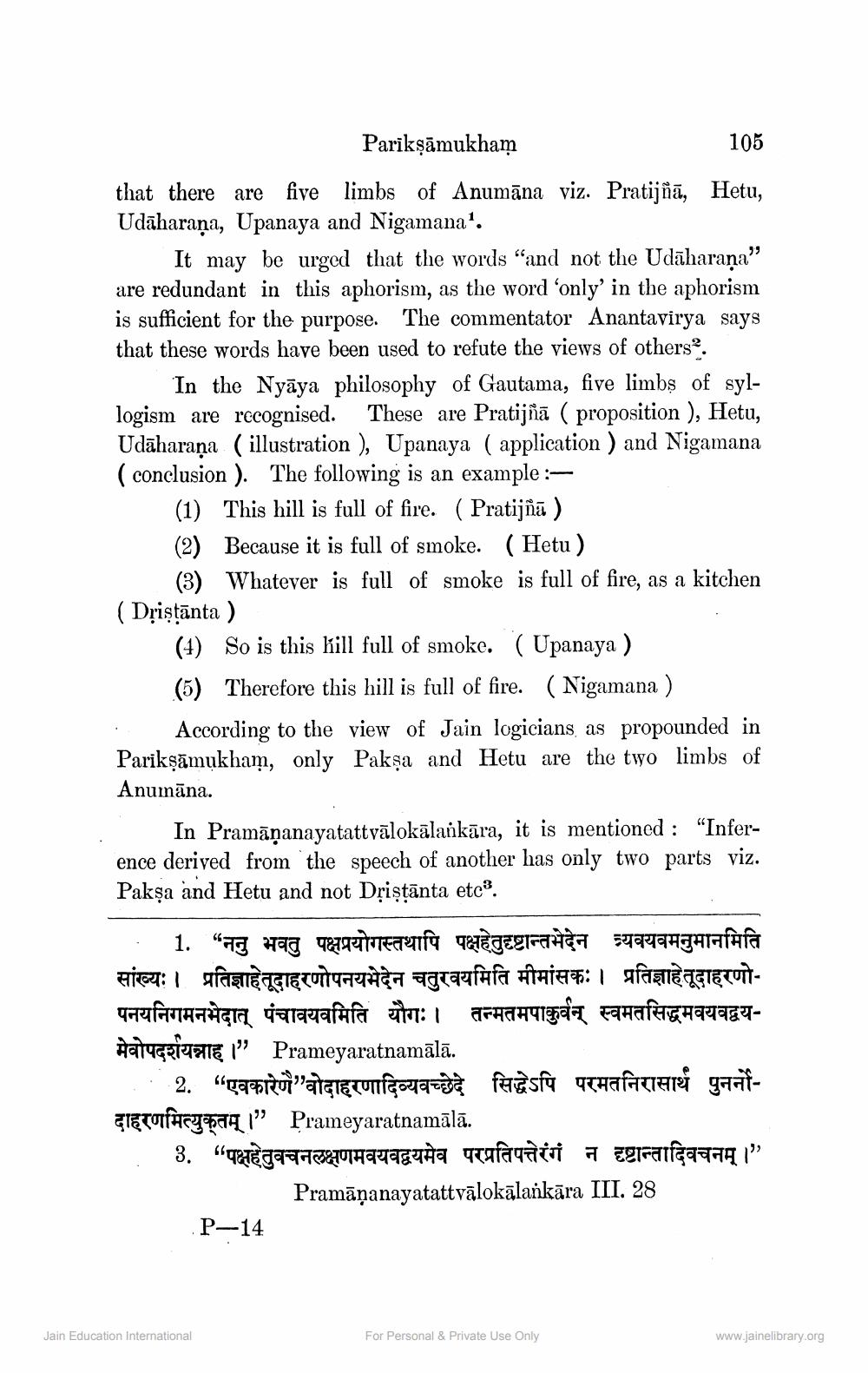________________
Parikṣāmukham
105
that there are five limbs of Anumāna viz. Pratijñā, Hetu, Udaharaṇa, Upanaya and Nigamana1.
It may be urged that the words "and not the Udaharana" are redundant in this aphorism, as the word 'only' in the aphorism is sufficient for the purpose. The commentator Anantavirya says that these words have been used to refute the views of others.
In the Nyaya philosophy of Gautama, five limbs of syllogism are recognised. These are Pratijñā ( proposition ), Hetu, Udaharaṇa (illustration), Upanaya ( application) and Nigamana (conclusion). The following is an example:
--
(1) This hill is full of fire. (Pratijñā)
(2) Because it is full of smoke. (Hetu)
(3) Whatever is full of smoke is full of fire, as a kitchen (Driṣṭānta)
(4) So is this kill full of smoke. (Upanaya )
(5) Therefore this hill is full of fire. (Nigamana)
According to the view of Jain logicians as propounded in Parikṣamukham, only Pakṣa and Hetu are the two limbs of Anumāna.
In Pramaṇanayatattvālokālaṁkāra, it is mentioned: "Inference derived from the speech of another has only two parts viz. Pakṣa and Hetu and not Driṣṭanta etc.
1. “ ननु भवतु पक्षप्रयोगस्तथापि पक्षहेतुदृष्टान्तभेदेन त्र्यवयवमनुमानमिति सांख्यः । प्रतिज्ञाहे तूदाहरणोपनयभेदेन चतुरवयमिति मीमांसकः । प्रतिज्ञाहेतूदाहरणोपनयनिगमनभेदात् पंचावयवमिति यौगः । तन्मतमपाकुर्वन् स्वमतसिद्धमवयवद्वय"Prameyaratnamālā.
2. " एवकारेणै "वोदाहरणादिव्यवच्छेदे सिद्धेऽपि परमतनिरासार्थं पुनर्नोfcy" Prameyaratnamālā.
3. "पक्षहेतुवचन लक्षणमवयवद्वयमेव परप्रतिपत्तेरंगं न दृष्टान्तादिवचनम् । "
Pramāṇanayatattvālokālaṁkāra III. 28
Jain Education International
P-14
For Personal & Private Use Only
www.jainelibrary.org




